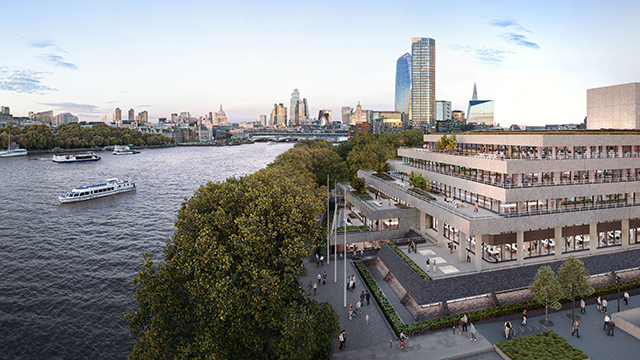COMMENT How the government can deliver on its mission to grow the economy is coming into ever sharper focus. It is clear from the raft of consultations and announcements it is a government in a hurry.
The property industry has a critical part to play in this, and politicians now seem to recognise London’s role in powering UK plc. We have set out our plan for growth under four key asks encompassing planning reform, transitioning to net zero, incentivising long-term investment and supporting London’s global city status. For far too long planning reform has been neglected under the “too hard to do” file. The government’s latest consultation is an opportunity to make the reform needed to better enable, rather than hold back, development and unlock growth.
Acknowledge the role of offices
While data centres and gigafactories are no doubt important, the UK is a primarily service economy accounting for 81% of national GVA and generating 83% employment. For central London and other major cities it accounts for virtually all economic output. But oddly the role of offices is not fully acknowledged in the government’s proposed reform to the planning system.
Given how strategically important London’s Central Activities Zone (largely Zone 1 on the Tube) is to the capital, and the country, it is curious how the collapse in major planning applications over the last decade has not set alarm bells ringing at 10 and 11 Downing Street. All cities have seen a fall, but the CAZ has been hit particularly hard with an average 54% fall in major planning applications. Some parts of the CAZ’s nine boroughs have fared better than others, but the clear trend is downwards despite pockets of growth in the City, South Bank, King’s Cross and parts of the West End. This is acting as a drag on growth. A recent London Property Alliance survey of developers and investors showed 40% had experienced planning delays, with 17% shelving plans altogether due to planning uncertainty.
There have, of course, been external pressures out of our control, but the planning system has become increasingly complex, risky and expensive. How to modernise and repurpose our older and poor quality commercial buildings has also become a binary debate of retrofit versus redevelopment.
The proposed redevelopment of Marks & Spencer’s Marble Arch store has become a lightning rod for the issue. After four years in the planning system it has become an unfortunate and unintended “test case” in how redevelopment will be assessed amid intense campaigning to resist demolition. This is despite securing planning consent from both its local and regional authorities. Marks & Spencer is one of a number of owners whose investments have stalled, holding back the very real social and economic benefits that development can bring.
Balancing act
What were intended as well-meaning efforts to encourage the commercial real estate industry to look at retrofitting older stock first has strayed into campaigns and targets that in reality are retrofit only. Proposed targets on levels of embodied carbon in some emerging local plans are being set at such high rates that they could effectively all but ban deep retrofit and new development.
The commercial property sector, driven by tenant demand, green financing requirements and its own corporate net zero targets, has invested huge sums into decarbonising buildings. Retrofit first is now the default approach. Where this is not feasible, reducing embodied carbon is a priority. Over the longer term the more sustainable solution is often a mixture of both retrofit and new development, alongside materials reuse. But the planning system is struggling with this more sophisticated and delicate balancing act, leaving it to local councils to determine with minimal guidance, with mixed results.
According to our analysis, 74% of office space across the City and West End requires significant upgrade to meet incoming energy efficiency standards (EPC B by 2030), but a lack of clarity in how applications, even those that contain elements of retrofit, will be assessed is causing projects to stall.
Our most recent Retrofit First, Not Retrofit Only report, produced in partnership with Savills, highlighted there is not a one-size-fits-all approach. It has become clear that we need an updated framework for decision-making in these cases. Planning decisions must balance heritage, sustainability, as well as economic factors, in line with the NPPF’s three objectives of sustainable development: economic, social and environmental.
Industry viewpoint
While we were disappointed to see that the proposed changes to the NPPF did not address these issues, government has now acknowledged the challenges with a new survey to understand what the issues are on the ground and the policy interventions needed. I would strongly urge all those in the property sector to look for the survey on our website and take 10 minutes to fill it in.
If the government can fix planning, it will in turn help unlock our other asks around net zero, growing the economy and incentivising investment. London and the UK are well placed to take advantage of an ambitious drive to help the country achieve its true potential. The time is now.
Charles Begley is chief executive of the London Property Alliance











